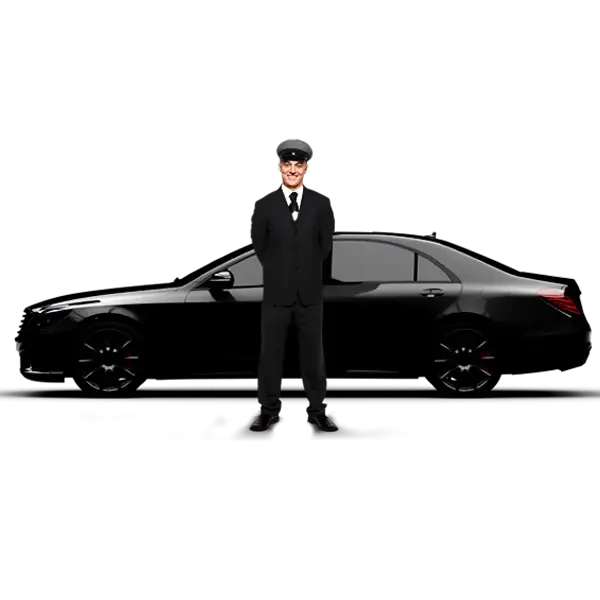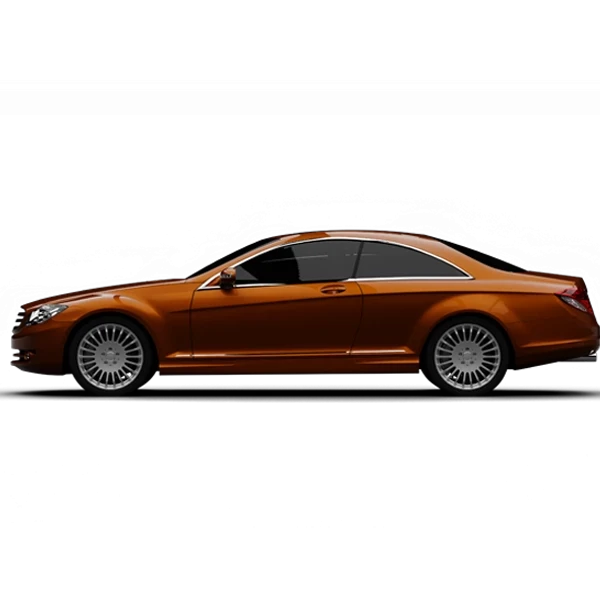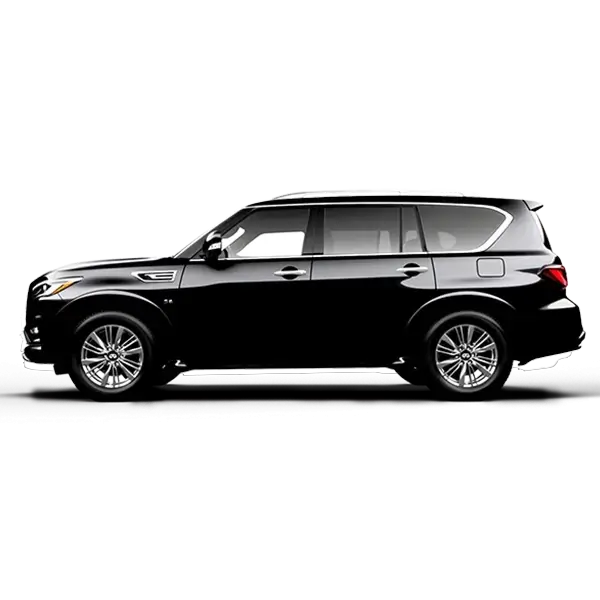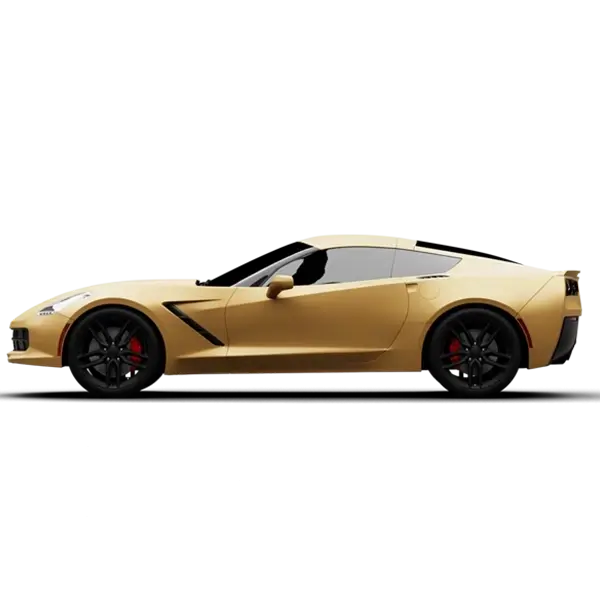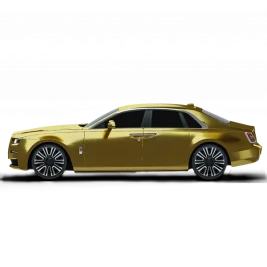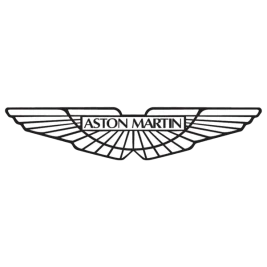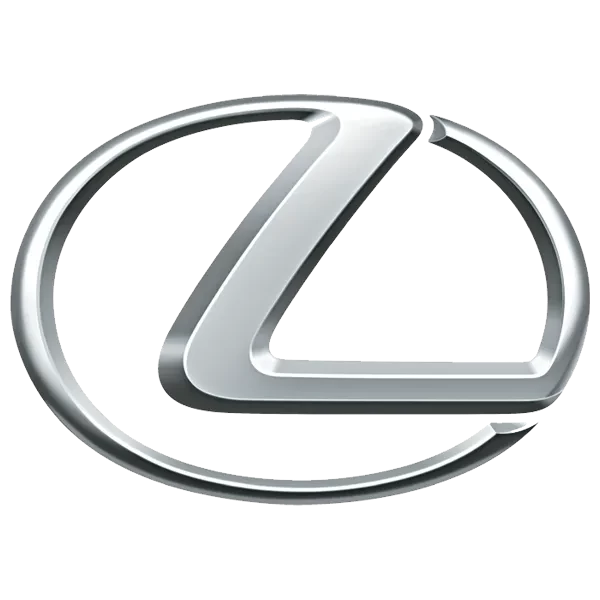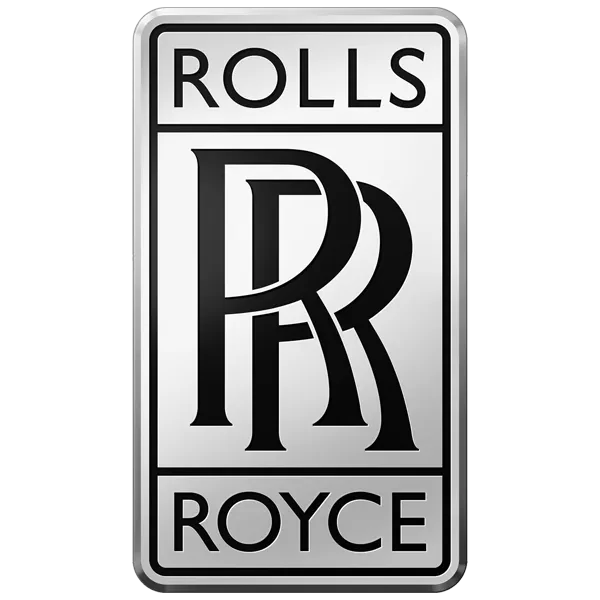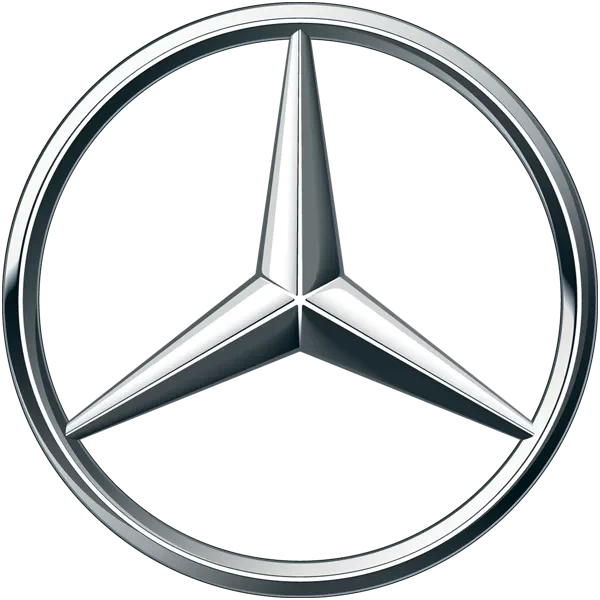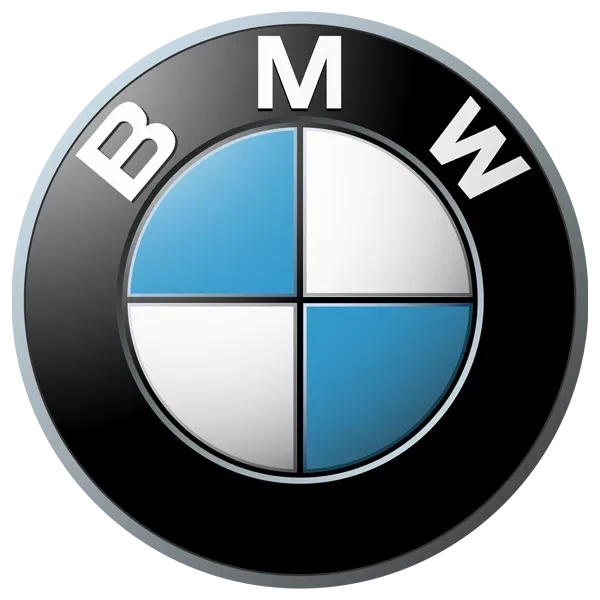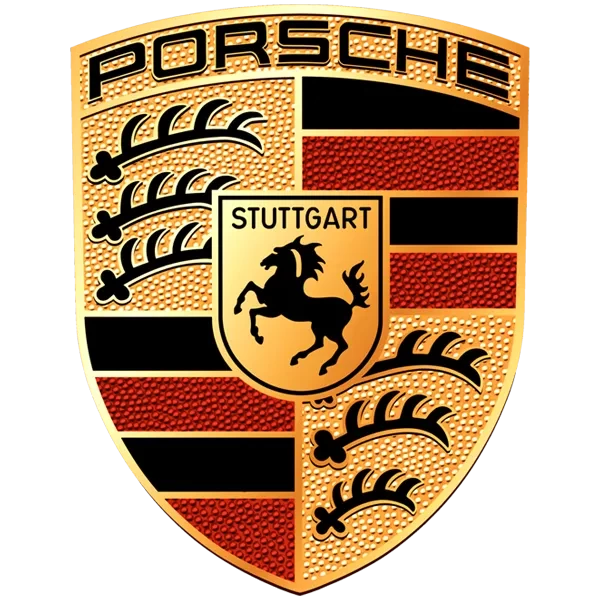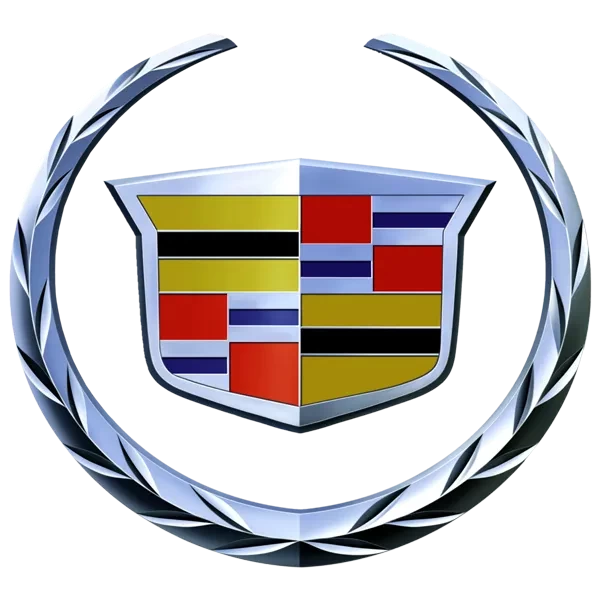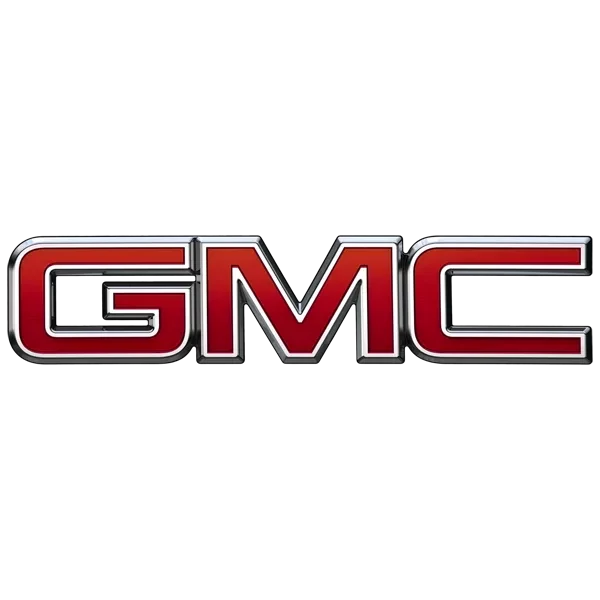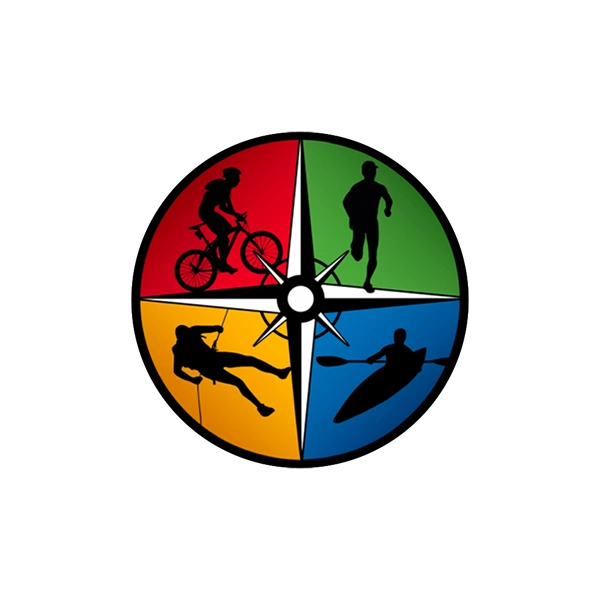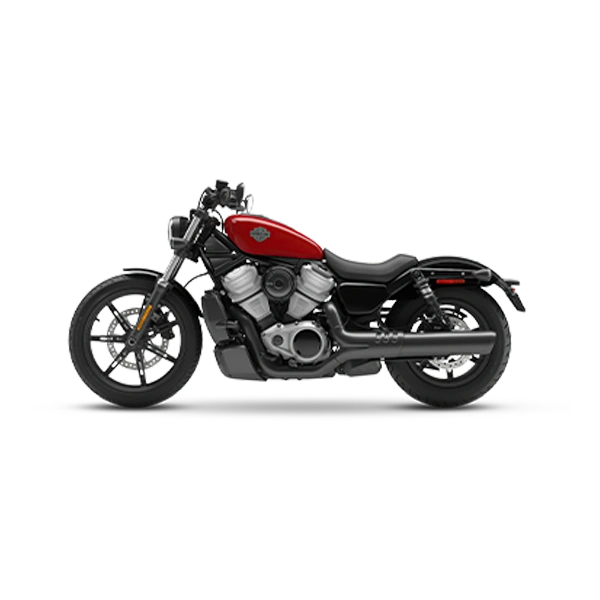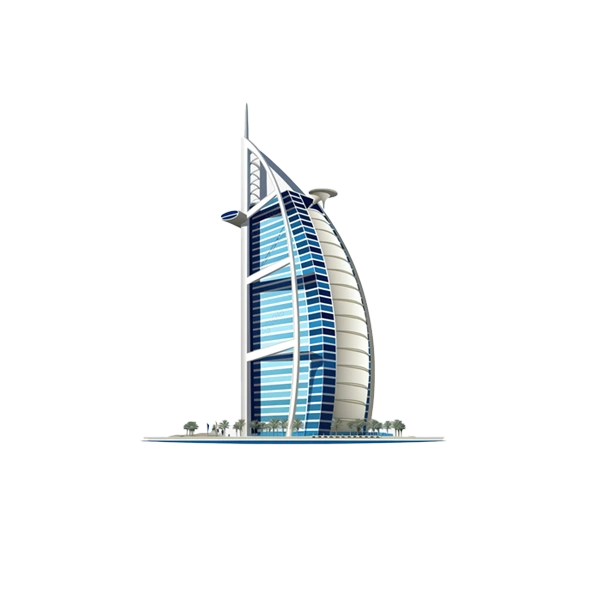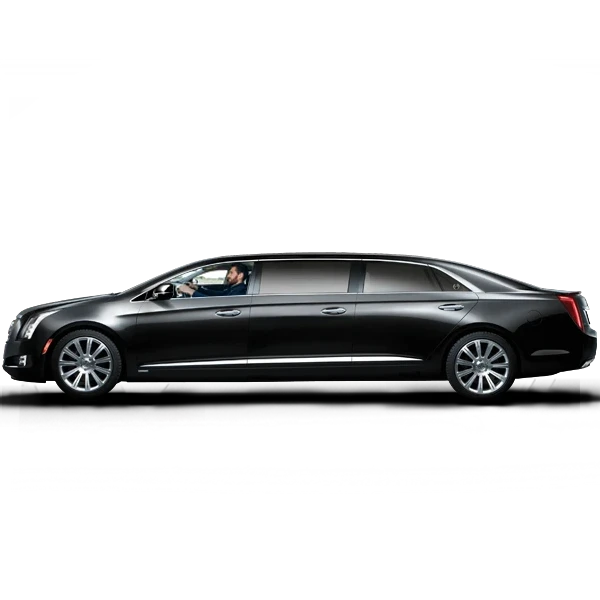17 Most Common Tesla Problems and Solutions
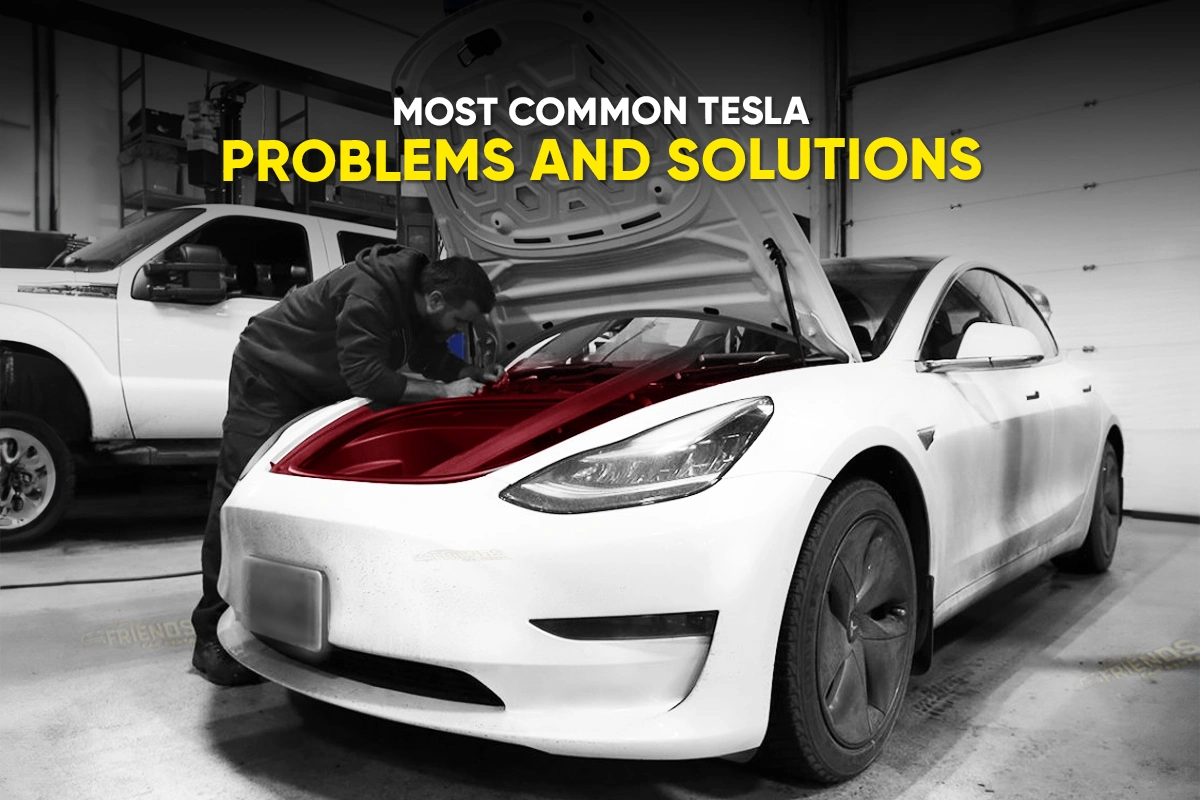
Looking for the most common Tesla problems and solutions? This comprehensive guide details the 17 most frequent Tesla car issues and their practical fixes, empowering current & future owners to maintain their cars with confidence.
Tesla is a global brand synonymous with groundbreaking technology, performance, and disruptive innovation. However, even these high-tech machines face certain issues that owners should be aware of. Understanding the existing Tesla car problems and their common solutions is crucial for a straightforward and consistently excellent ownership experience.
Learn about these 17 Tesla problems to avoid unexpected setbacks on the road and ensure a seamless and confident driving experience. Dive in & stay ahead of the curve.
17 Common Tesla Issues and Fixes: Overview
To help you diagnose and resolve issues faster, check out this overview table of the 17 most common Tesla problems, affected models, costs, and key fixes:
Related Article: Most Common McLaren Problems and Solutions
Manufacturing & Fit/Finish Defects
1. General Exterior Fit and Finish Defects
What Happens:
These defects show up as inconsistent spacing or uneven panel heights. You will notice this affecting components like the hood, trunk, doors, and fenders. This signals inconsistent quality control during final vehicle assembly. While many view this as purely cosmetic, it compromises component integrity. Inconsistencies can cause wind noise and possible water intrusion. You also risk long-term damage to the paint due to panel rubbing.
Affected Models:
Model S, Model X, Model 3, and Model Y.
Symptoms:
Visually uneven gaps between adjacent body panels.
Panel seams vary dramatically along their full length.
The hood or trunk sits too high or too low versus the fender.
Doors requiring excessive force to close or feeling improperly sealed.
Common Causes:
Inconsistent quality control in the factory assembly process.
Variations in the stamping tolerances of body parts.
Panel adjustment bolts and hinges being improperly fastened.
Seals being damaged or incorrectly installed during production.
Impact:
Reduces the vehicle's premium appearance and visual quality.
Poor sealing causes increased interior wind and road noise.
Gaps increase the risk of water leaking into the frunk or trunk.
Misaligned panels can rub, causing paint chipping over time.
Solutions:
Service center adjusts the hinges and striker plates for alignment.
Technicians adjust the rubber stops on the frunk and trunk.
Replace any door or window seals that were damaged during assembly.
Estimated Repair Cost (Out of Warranty):
Panel Adjustment (Single Panel): AED 500-1,200
Door/Hatch Realignment (Complex): AED 1,100-2,500
Prevention Tips:
Thoroughly inspect all panel gaps right at delivery.
Use a gap gauge or a ruler to check alignment consistency.
Report defects within the short window (often 24 hours or 100 miles) for warranty coverage.
Check seals and door closure frequently, as misalignment can worsen.
2. Wind noise at higher speeds/improperly set door seals
What Happens:
When you drive your Tesla at highway speeds, you might start to hear an excessive whistling or a loud, irritating buffeting sound. This annoying noise is frequently caused by door seals that were not properly installed at the factory during the assembly process. These faulty seals create small gaps where high-speed airflow can get pushed directly into the cabin area of your vehicle. This particular problem is extremely irritating for drivers during daily commutes or while travelling on long road trips.
Affected Models:
Model 3 and Model Y.
Symptoms:
Whistling sound that increases noticeably above 80 km/h.
Excessively loud rushing air noise near the main door or window frames.
You can hear air passing through door seams, even when the windows are fully closed.
Water leakage around the vehicle’s doors or B-pillars during heavy rain or a car wash.
Common Causes:
Door or window weather seals were improperly seated and secured during assembly.
Misaligned door frames place uneven pressure on the crucial rubber seal.
The internal sealing foam can be damaged or possibly compressed too early.
Poor adhesion of the seals to the body of the car itself causes the issue.
Impact:
The constant wind noise significantly degrades your long-distance driving experience.
It also makes conversations and phone calls inside the cabin quite difficult for you.
Continuous high-volume noise exposure can lead to increased driver fatigue levels.
Compromised seals may allow water or moisture to enter the vehicle's interior over time.
Solutions:
Service center technicians will realign the door or window to ensure a proper fit.
They may adjust the window regulators to achieve a tighter seal against the rubber.
Seals that are currently damaged or completely missing need to be replaced entirely.
Technicians can also apply a high-quality sealant or foam to fill any identified gaps.
Estimated Repair Cost (Out of Warranty):
Door Seal Replacement (Single Door): AED 800-1,500
Door Realignment/Adjustment: AED 500-1,100
Prevention Tips:
You must inspect the condition of all rubber seals regularly for any visible cracks or tears.
Be sure to clean the rubber seals periodically using a safe, approved silicone spray.
Gently wash the vehicle and avoid using overly high-pressure water directly on door seams.
Report any new or worsening wind noise immediately to a Tesla service center.
Related Article: Most Common Volkswagen Problems and Solutions
3. Poor quality of interior materials/cheap-feeling trim/rattling interior panels
What Happens:
Many owners report persistent and annoying noises inside the cabin, frequently hearing loud creaking or frustrating rattling sounds while they are driving. These issues often arise from interior panels that have become loose or were simply not secured properly during the initial factory assembly. The problem is usually compounded by certain trim pieces, particularly those around the dashboard and center console, which use materials that some drivers consider lower quality. These components may not withstand vibrations effectively, causing an unpleasant noise that disrupts the quiet electric driving experience.
Affected Models:
Model S, Model X, Model 3, and Model Y.
Symptoms:
Constant buzzing or squeaking noises heard from the dash area or door panels.
Rattling sounds from the center console or B-pillars, especially on bumpy roads.
Interior trim pieces that feel loose or may separate slightly from the main panel.
Visible scuffing or premature wear on the seating material or other interior surfaces.
Common Causes:
Plastic retaining clips and fasteners were either broken or were not fully seated at the factory.
Wires and harnesses inside the door panels or dash were left unsecured by the assembly team.
Different types of interior plastic materials rubbing together cause friction and subsequent noise.
Insufficient sound-dampening foam or felt was applied between contact points and panels.
Impact:
Significantly reduces the perceived value and luxury feel of the vehicle for the owner.
The noise drastically detracts from the otherwise silent and premium EV driving experience.
It creates a major source of distraction and annoyance during daily commutes or longer journeys.
Over time, persistent rubbing can cause visible wear marks on various interior surfaces.
Solutions:
Technicians apply felt tape or sound-deadening foam to all the rubbing plastic contact points.
Service center staff must remove panels to secure loose wiring harnesses and replace clips.
They will often adjust and re-torque loose seat brackets or internal console components.
You may need to secure exterior components, like the fender liner, that might be causing noise transfer.
Estimated Repair Cost (Out of Warranty):
Rattles/Squeaks Diagnosis and Repair (Per Visit): AED 400-1,200
Door/Dash Panel Replacement (Single): AED 1,000-2,500
Prevention Tips:
You should regularly check for and secure any loose items kept in the door pockets or trunk.
Apply small pieces of felt or foam tape yourself to known or easily accessible rattle points.
Do not rest objects against the dashboard or center console area while you are driving.
Always report interior noise problems immediately, specifically during the initial warranty period.
4: Paint defects (streaks, orange peel, inconsistencies)
What Happens:
This widespread quality control concern results from flaws in the factory painting process, such as incorrect spray-gun settings, high paint viscosity, or rushing the paint curing. The resulting texture, known as orange peel, gives the surface an uneven, bumpy look that significantly dulls the car's reflective shine and overall finish. Furthermore, factory application errors often result in a thinner, softer clear coat layer compared to luxury competitors, which makes the paint highly susceptible to chips and flaking.
Affected Models:
Model S, Model X, Model 3, and Model Y.
Symptoms:
The paint surface shows a noticeable dimpled or bumpy texture, similar to the skin of an orange.
Visible inconsistencies, such as paint streaks, swirls, or "dirt nibs" (tiny trapped contaminants) are present.
Premature chipping and flaking occur easily on the bumper, hood, and around the wheel wells.
The clear coat may appear dull, lack depth, or show signs of premature fading over time.
Common Causes:
Incorrect application technique or poor adjustment of spray gun equipment pressure during assembly.
Paint viscosity is too high, preventing the droplets from levelling out properly into a smooth film.
Improper curing where the temperature or drying time was not sufficient for solvents to escape.
Low paint thickness compared to industry standards, particularly a thin clear coat layer.
Impact:
Significantly reduces the perceived value and luxury feel of the vehicle due to the visual flaws.
The soft, thin paint is highly prone to rock chips, scratches, and swirl marks.
It often necessitates immediate investment in a Paint Protection Film (PPF) to shield the factory finish.
Damage from road debris is generally not covered under the standard warranty, leading to high costs.
Solutions:
Paint correction involves wet sanding and polishing to level the paint surface and remove the texture.
Severe defects may require the technician to sand the panel back down and reapply the clear coat.
Applying a protective layer like PPF or a ceramic coating immediately after purchase is essential.
Technicians often need to address the underlying cause before polishing the panel to a smooth finish.
Estimated Repair Cost (Out of Warranty):
Paint Correction/Polishing (Per Panel): AED 400–1,200
Small Chip/Scratch Repair (Touch-up): AED 300–800
Full Panel Repaint (Certified Body Shop): AED 1,000–3,000+
Prevention Tips:
You should inspect the vehicle thoroughly for defects before accepting delivery and reject the car if major flaws are present.
Install a high-quality PPF on the front of the vehicle immediately to absorb impacts from road debris.
Wash the car using the proper two-bucket method and soft microfiber materials to avoid inducing swirl marks.
You should not delay addressing chips, as the thin paint can quickly allow corrosion to begin on the underlying metal.
Related Article: Most Common Jeep Problems and Solutions
5. Faulty or malfunctioning door handles (failure to present, heat, freezing)
What Happens:
The flush-mounted door handles often fail to present or retract fully. This malfunction is primarily due to mechanical stress breaking the internal actuator gear, or a failure in the wiring harness and micro-switches. Extreme weather significantly impacts reliability; high temperatures can cause electronics to fail, while cold temperatures can freeze moisture within the mechanism. This failure compromises basic vehicle access and presents a safety concern.
Affected Models:
Model S, Model X, Model 3, and Model Y.
Symptoms:
The handle fails to present or pop out when you approach the car or touch the unit.
A handle sticks in the open position, preventing the door from securely latching.
You may hear a repeated clicking or motor sound as the mechanism attempts to cycle.
The interior door release may become difficult to operate or feel significantly stiff.
Common Causes:
Mechanical failure of the small plastic actuator gear within the assembly.
Internal wiring that breaks due to constant flexing near the micro-switch connection.
Low-voltage battery issues can prevent the electric locks from receiving sufficient power.
Extreme weather conditions (heat or cold) affect electronic sensors, causing materials to warp or freeze the internal mechanism.
Impact:
Significantly compromises access to the vehicle, being a major inconvenience for drivers and passengers.
It is a potential safety hazard, especially for rear passengers, if the emergency manual release is not easily accessible.
The continuous cycling of a stuck handle can prematurely drain the vehicle’s low-voltage battery.
Repair costs for this known design flaw are substantial if the vehicle is no longer covered by warranty.
Solutions:
Soft or hard computer reboot may temporarily resolve sensor or software-related malfunctions.
Scheduled service to replace the entire handle assembly with the latest generation parts.
For Model S, technicians can often replace the individual micro-switch loom or actuator gear to save cost.
Applying WD-40 to the pivot pins, as suggested by Tesla, can help prevent freezing in extremely cold weather.
Estimated Repair Cost (Out of Warranty):
Handle Replacement (Model S): AED 1,500–3,000 per handle.
Model 3/Y Handle/Actuator Repair: AED 800–1,500 per handle.
DIY Repair Kit (Model S gear/loom): AED 650–850 (Parts only).
Prevention Tips:
Keep the handle clean and free of dirt or debris that could obstruct its smooth movement.
Regularly check the handle's operation for any signs of sluggishness or resistance.
For the older Model S, consider a proactive replacement of the internal gear with a more durable metal aftermarket part.
Use the app to precondition the car during very hot or cold conditions to ensure the mechanisms are warm and pliable.
6. Malfunctioning power liftgate/hatch
What Happens:
The power liftgate or hatch fails to open fully or to latch and close completely. This often presents as the liftgate stopping mid-movement, or trying to close and immediately rebounding open again, sometimes with an audible beeping or groaning noise. The primary cause is typically a faulty latch actuator or cinching motor, which prevents the hatch from securely drawing down and locking into the closed position. This is often an intermittent issue that the service center finds difficult to replicate.
Affected Models:
Model 3 and Model Y.
Symptoms:
The hatch does not respond to button, key fob, or touchscreen commands.
The hatch stops mid-cycle when opening or closing.
The hatch tries to close but bounces back open instantly.
You may hear a loud "groaning" or clicking sound during operation.
Water leaks into the trunk space, often due to misaligned seals caused by repeated forcing of the latch.
Common Causes:
Failure of the cinching motor or high-force latch actuator that pulls the hatch securely closed.
Obstruction or misalignment of the latch on the frame prevents a secure lock.
Faulty wiring or micro-switches within the liftgate mechanism, often near the hinge.
Software glitches or the vehicle believing an obstruction is present, activating the safety-stop feature.
Impact:
Inability to securely lock the vehicle, as the car senses an open door/trunk.
Potential water damage to the rear cargo area electronics and carpet if seals are compromised.
Major inconvenience when loading or unloading cargo.
Repair often requires replacing the entire latch assembly, leading to high out-of-warranty costs.
Solutions:
Perform a system reset (soft or hard reboot) to clear any temporary software errors.
Manually adjust the closure position via the touchscreen settings.
Clean and lubricate the latch mechanism to ensure smooth operation.
Schedule a service appointment to replace the latch/cinch motor assembly for a permanent fix.
Estimated Repair Cost (Out of Warranty):
Latch/Cinching Motor Replacement: AED 900–2,000 (Parts and Labour, depending on model and shop).
Seal/Weatherstripping Replacement: AED 500–1,200.
Diagnostics/Reset: AED 150–500.
Prevention Tips:
Avoid slamming the liftgate manually, as this can worsen latch misalignment or damage the motor.
Use the touchscreen or app to operate the hatch, allowing the motors to work as intended.
Periodically check the latch area for any debris or obstructions before closing.
If a slight misalignment is suspected, have a professional inspect the seal alignment before it causes leaks.
Related Article: Most Common Cadillac Problems and Solutions
Autopilot & Software Failures
7. Autopilot/ADAS Core Malfunctions
What Happens:
This issue involves unexpected and potentially dangerous behaviour from the Advanced Driver Assistance System (ADAS), including the popular Autopilot feature. The most concerning manifestation is "phantom braking," where the vehicle unexpectedly and aggressively decelerates at high speed on a clear path. This core malfunction is often tied to the system's reliance on a vision-only camera suite. It may also present as false collision warnings, creating unnecessary alerts for objects that simply do not exist in the real world. These sensor and software misinterpretations can cause the car to make sudden, uncommanded steering inputs or reduce speed without driver input.
Affected Models:
Model S, Model X, Model 3, and Model Y.
Symptoms:
The vehicle aggressively brakes for no reason on a clear highway (phantom braking).
The system flashes collision warnings or sounds alarms without a genuine threat.
The car makes sudden, uncommanded steering inputs within its lane.
Autopilot may disengage unexpectedly or refuse to activate even in clear conditions.
Common Causes:
Reliance on a vision-only system that misinterprets shadows, reflections, or road undulations.
Sensor obstruction from dirt, ice, fog, or a strong glare on the cameras.
Software glitches from new over-the-air updates causing erratic system behaviour.
Sensor miscalibration where cameras fall out of alignment following a repair or minor impact.
Impact:
This creates a serious safety risk of being rear-ended, especially on fast-moving roads.
It causes significant driver stress and reduces confidence in using a key vehicle feature.
The frequent sudden movements can lead to premature tire wear and increased brake maintenance.
The malfunction may be an issue of liability in the event of an accident if ADAS was engaged.
Solutions:
Clean all exterior cameras and sensors thoroughly before engaging Autopilot.
Perform a vehicle system reboot via the touchscreen to clear temporary software issues.
Wait for a subsequent over-the-air software update, as the manufacturer often releases fixes.
Schedule a service appointment for a camera calibration or advanced diagnostics.
Estimated Repair Cost (Out of Warranty):
Camera or Sensor Replacement: AED 1,835–3,670.
Sensor Calibration: AED 735–1,200.
Diagnostics and Software Troubleshooting: AED 365–1,100.
Prevention Tips:
Stay alert and keep your hands on the wheel, ready to take over immediately.
Avoid using Autopilot in conditions like heavy rain, fog, or near strong shadows or sun glare.
Report the incidents using the voice command feature after a phantom braking event to aid data collection.
Ensure your vehicle receives all timely software updates that are designed to fix known bugs.
8. Unintended acceleration (in FSD or Adaptive Cruise Control)
What Happens:
This phenomenon involves a sudden, uncontrolled surge of acceleration, especially when the car is moving slowly, such as in a parking lot or while parking. The vehicle’s internal data often records this event as the driver pressing the accelerator pedal fully, even if the driver insists they were applying the brake. Some theories suggest that certain electrical or software faults can cause the system to misread the accelerator pedal position. This unexpected power surge is a serious safety concern, leading to a loss of control and potential accidents at low speeds. The sudden acceleration can also sometimes be linked to the Adaptive Cruise Control system misinterpreting its surroundings.
Affected Models:
Model 3 and Model Y.
Symptoms:
The car abruptly and powerfully accelerates at low speeds without driver input.
The vehicle logs show the accelerator pedal was pressed even though the driver was braking.
An unexpected surge of speed occurs when maneuvering in a parking space or garage.
The issue often occurs when engaging or disengaging the Adaptive Cruise Control (ACC).
Common Causes:
Driver error, often referred to as pedal misapplication (pressing the accelerator instead of the brake).
Electrical or sensor faults within the accelerator pedal position system.
Software misinterpretation of low-speed driving conditions or proximity alerts.
Overloading the 12V system during high-torque functions causes voltage dips and sensor errors.
Impact:
This poses a very high risk of low-speed accidents in parking lots, garages, and driveways.
It can lead to severe physical damage to the vehicle and surrounding property.
The sudden nature of the event causes extreme driver panic and a loss of vehicle control.
This issue creates liability concerns, as data logs often conflict with driver testimony.
Solutions:
Brake forcefully to override the acceleration, as the brake input will always cut motor torque.
Shift immediately into Neutral (N) to disconnect the drive motor.
Perform a system reboot via the touchscreen to clear temporary electrical glitches.
Have the accelerator pedal assembly and wiring thoroughly inspected by a technician.
Estimated Repair Cost (Out of Warranty):
Accelerator Pedal Assembly Replacement: AED 2,575–5,510 (The cost is for the full redundant sensor unit).
System Diagnostics & Wiring Inspection: AED 550–1,285 (To rule out electrical faults).
Software Update: AED 0 (Usually performed over-the-air at no cost).
Prevention Tips:
Stay focused and keep your foot on the brake pedal during low-speed maneuvers.
Always check the display to confirm the gear selection before accelerating from a stop.
Ensure floor mats are secured and cannot interfere with the accelerator pedal's full travel.
Maintain situational awareness and be ready to shift into Neutral if an unexpected surge occurs.
Related Article: Most Common Kia Problems and Solutions
9. Critical FSD Software Errors
What Happens:
This issue describes significant and dangerous failures where the Full Self-Driving (FSD) Beta software performs maneuvers that violate traffic laws or create serious safety hazards. These critical errors can include driving on the wrong side of the road, running red lights, or initiating turns directly into oncoming traffic. The software may become momentarily confused by complex intersections or construction zones, leading to abrupt stops or sudden, inexplicable changes in direction. These unsafe actions require the driver to rapidly intervene and manually correct the vehicle's path to prevent an imminent collision.
Affected Models:
Model S, Model X, Model 3, and Model Y.
Symptoms:
The vehicle attempts to run a red light or drives through a stop sign without stopping.
The system performs an illegal or unsafe lane change directly in front of another vehicle.
FSD attempts to drive into areas marked with construction or cones without avoiding them.
The car makes an uncommanded sharp turn or steers into an opposing traffic lane.
Common Causes:
Reliance on outdated, incomplete, or incorrect high-definition mapping data errors.
The software encounters 'edge cases' it was not programmed to handle, like complex lane merges.
Vision system failure to correctly identify temporary traffic controls or poorly marked road lines.
A recently pushed Over-the-Air (OTA) software update introduced a new regression or logical flaw.
Impact:
This presents an immediate and high risk of a major accident, potentially leading to serious injury.
The errors cause a direct violation of traffic laws, which may result in citations or legal penalties for the driver.
It generates deep driver distrust and dramatically increases the mental load required to supervise the system.
Continuous intervention wears out the driver and negates the core benefit of the FSD feature.
Solutions:
Immediately take over steering and braking the moment the vehicle commits an unsafe maneuver.
Report the incident to the manufacturer with the exact time and location for data review.
Disable the FSD Beta feature entirely and revert to standard Autopilot or Traffic-Aware Cruise Control.
Wait for a subsequent software update, as the manufacturer relies on collected data to fix these bugs.
Estimated Repair Cost (Out of Warranty):
Accident damage repair can range from AED 11,000 to over AED 36,700 for body and sensor work.
The ongoing FSD subscription is AED 735 per month or the full package costs over AED 55,000.
Prevention Tips:
Maintain continuous, active supervision of the road and the vehicle's planned actions.
Be ready to disengage FSD instantly by moving the steering wheel or pressing the brake pedal.
Avoid using FSD in highly complex areas like major construction zones or unmarked roads.
Ensure all camera lenses are perfectly clean and free of dirt or condensation before engaging the system.
Electrical, Infotainment & Charging Issues
10. Climate control system malfunctions
What Happens:
The highly complex climate control system fails to maintain a consistent cabin temperature, which is often seen as erratic heating or cooling behaviour. Newer models use a heat pump system to manage thermal energy for the cabin, battery, and motors. A central failure point, such as the octovalve or the compressor, can completely disrupt the system's functions. Common indicators include the car blowing only cold air when heat is requested or constantly fluctuating between temperatures. This malfunction is a huge inconvenience, severely impacting passenger comfort. Since the heat pump assists with battery cooling in hot climates, a failure could also affect long-term battery health and performance.
Affected Models:
Model S, Model X, Model 3, and Model Y.
Symptoms:
The vehicle is unable to generate cabin heat, blowing only cold or ambient air.
The cabin temperature fluctuates wildly and does not match the driver's setting.
The windshield defroster function is ineffective or fails to clear the glass.
Strange noises, like high-pitched whining or clunking, come from the HVAC area.
Common Causes:
Failure or blockage of the coolant flow valve or the multi-way octovalve.
A fault or low charge level in the main heat pump compressor unit.
Issues with the system's temperature sensors providing inaccurate data.
A slow refrigerant leak, preventing efficient heat transfer.
Impact:
Extreme discomfort for occupants, which is particularly severe in the extreme heat of Dubai.
Potential for long-term battery performance degradation if the cooling component is compromised.
Reduced visibility and safety if the system fails to adequately defrost the windshield.
This often requires an expensive, multi-component replacement outside of the vehicle's warranty period.
Solutions:
Perform a system reset (sometimes called a soft reboot) via the steering wheel controls.
Check to ensure your vehicle's battery is charged above 20% and not in a 'Range Mode' setting.
Manually check for software updates and install the latest version, as some issues are firmware-related.
Schedule a professional service appointment to diagnose the complex octovalve/compressor system.
Estimated Repair Cost (Out of Warranty):
Replacement of the heat pump compressor and associated parts can cost approximately AED 5,500 to over AED 14,000.
A simple AC recharge service and filter replacement can range from AED 300 to AED 1,500.
Prevention Tips:
Pre-condition the cabin before driving, especially when the car is plugged in, to reduce system strain.
Regularly check and replace the cabin air filters to ensure maximum airflow and prevent clogs.
Keep the vehicle software updated to benefit from the manufacturer's bug fixes and thermal improvements.
Avoid parking in direct, intense sunlight for long periods whenever possible.
Related Article: Most Common Bentley Problems and Solutions
11. Infotainment/Main Screen Failure & Electronics Issues
What Happens:
Since the central touchscreen serves as the primary control for virtually all vehicle functions, a failure in this unit or its electronics can be a significant problem. Issues range from a completely blank screen to an intermittent unresponsiveness that ignores touch commands. Some failures stem from software bugs, which can be temporarily fixed with a simple reboot. However, persistent problems often point to hardware failure in the Media Control Unit (MCU) due to memory wear, a component known as the eMMC chip, or issues with the screen's cooling. This malfunction can disable essential features while driving, including the rearview camera, navigation, and climate controls, demanding immediate driver attention.
Affected Models:
Model S, Model X, Model 3, and Model Y.
Symptoms:
The main display is completely black and will not turn on.
The touchscreen is unresponsive to inputs, or it experiences phantom touches.
Navigation, music streaming, and other connectivity features are disabled.
The rearview camera view does not appear when shifting to Reverse.
Common Causes:
Hardware failure of the main Media Control Unit (MCU), particularly the eMMC chip.
Software glitches or installation errors following a system update.
Overheating of internal components, especially when the car is parked in extreme heat.
Failure of the low-voltage 12V battery, which powers the electronics.
Impact:
Immediate loss of critical safety features, including the mandatory rearview camera.
Inability to adjust climate control, headlights, or wipers if they are controlled via the screen.
Creates a significant distraction for the driver trying to operate a non-functional system.
You will lose access to navigation and all streaming media services.
Solutions:
Perform a soft reboot of the touchscreen by holding down both scroll wheels.
If a soft reset fails, try a full power cycle of the vehicle.
Ensure the vehicle's software is current to rule out known bug fixes.
Schedule a service appointment for a diagnosis of the MCU or eMMC memory.
Estimated Repair Cost (Out of Warranty):
Replacement of the Media Control Unit (MCU) can cost approximately AED 8,500 to over AED 11,000.
Labour for a diagnosis and full screen/module swap can add up quickly.
The replacement of the low-voltage 12V battery is around AED 500 to AED 1,000.
Older Model S/X vehicles may be eligible for a free eMMC recall replacement.
Prevention Tips:
Promptly install all new software updates to receive performance and stability patches.
Use Cabin Overheat Protection to reduce heat stress on the electronics when parked.
Avoid exposing the car to direct, intense sunlight for extended periods.
Monitor the health of your 12V battery and replace it proactively every 3-4 years.
12. Connectivity problems
What Happens:
You might suddenly experience erratic behaviour with your vehicle's core wireless systems, often without a clear trigger. The primary issue involves the Bluetooth connection dropping or failing to consistently pair with your personal smartphone, which compromises basic functions like the "Phone as Key." Your car may also struggle to find or maintain a stable connection to known Wi-Fi networks when you are parked at home or work. This frustrating inconsistency severely impacts your ability to download large, crucial over-the-air software updates. The cellular LTE/Premium Connectivity can also become unreliable, leading to a loss of streaming media and critical live traffic data.
Affected Models:
Model S, Model 3, Model X, Model Y
Symptoms:
The smartphone app displays a constant "Connecting" message without ever establishing a link.
Media playback via Bluetooth experiences frequent audio cutting or complete disconnection.
Wi-Fi networks are visible but fail to connect, or the connection is too weak to download updates.
The vehicle's cellular/LTE icon shows little to no signal, leading to map and browser failure.
Common Causes:
Temporary software bugs that occur immediately following an over-the-air update.
A physical defect or failure in the vehicle's Media Control Unit (MCU) or connectivity board.
Incorrect application permissions or battery-saving modes enabled on the connected smartphone.
Interference from outside sources or a very weak Wi-Fi signal at the vehicle's parked location.
Impact:
The "Phone as Key" feature's failure forces you to rely on the less convenient physical key card for vehicle access.
Your driving experience is diminished by the complete loss of streaming, internet browsing, and live traffic visualization.
Inability to download software updates leaves your vehicle without the latest security patches and feature enhancements.
Persistent issues often necessitate an expensive service visit to diagnose and potentially replace the internal connectivity module.
Solutions:
Perform a two-scroll-wheel button reset on the touchscreen to reboot the infotainment system.
On your phone, toggle Bluetooth off and on, and ensure the Tesla app has "Always Allow" location permission.
Remove and re-pair the phone key and any troublesome Bluetooth devices from both the vehicle and the phone.
If connected to home Wi-Fi, try moving the router or installing a range extender to boost the signal.
Estimated Repair Cost (Out of Warranty):
Connectivity Module Replacement (MCU component): AED 2,500–5,000
Diagnostic/Troubleshooting Fee (If no repair is performed): AED 400–750
Prevention Tips:
Ensure the Tesla mobile app is always running in the background on your phone.
Keep your vehicle connected to a stable, strong Wi-Fi network whenever possible for updates.
Always keep the vehicle's battery charged, as low battery can disable Bluetooth functions.
Perform a soft reboot of the touchscreen promptly after any software update that causes immediate connectivity issues.
Related Article: Most Common Mercedes-Benz Problems and Solutions
13. Issues with high-tech controls
What Happens:
These problems often manifest as intermittent or complete failure of the scroll wheels on the steering wheel, making simple adjustments impossible. You may find the touchscreen becoming unresponsive to your touch inputs, either freezing entirely or refusing to register commands in specific areas. The newer capacitive buttons, particularly those for turn signals on the Yoke, can fail to register a press or become accidentally activated, which is highly distracting. When the primary screen is unresponsive, you are temporarily cut off from essential controls like the fan speed, wiper settings, and even the rear-view camera feed.
Affected Models:
Model S, Model 3, Model X, Model Y (Especially models with the Yoke steering wheel)
Symptoms:
The steering wheel scroll wheels stop clicking or moving settings for volume, speed, or mirror position.
The main center touchscreen becomes completely frozen, displaying information but ignoring all touches.
Ghost touches occur where the screen registers inputs that you did not actually initiate.
The screen goes completely black, losing all critical driving information and control access.
Common Causes:
Temporary software glitches or corruption within the Media Control Unit (MCU).
Failure of the internal eMMC memory chip (often in older Model S/X units) due to wear and tear.
Physical failure or disconnection of the internal ribbon cables leading to the scroll wheels and controls.
Static electricity or residue on the screen interferes with its precise capacitive touch sensors.
Impact:
You lose the ability to safely adjust critical driving parameters like the cruise control speed or volume while you are driving.
Inability to access safety-critical functions, including activating the defrost/demist, shifting gears, or viewing the rear camera image.
The unexpected loss of function leads to significant driver distraction as you attempt a manual reboot while on the road.
You may be forced to drive without access to vital navigation or climate controls for the duration of the trip.
Solutions:
Simultaneously press and hold the two steering wheel scroll buttons to perform a soft reboot of the main touchscreen.
If the soft reset fails, perform a full power cycle of the vehicle by following the instructions within the "Safety & Security" menu.
Gently clean the touchscreen with a microfiber cloth and check for any dust or residue near the steering wheel controls.
If the fault is in the scroll wheel, schedule a service appointment for a professional hardware inspection.
Estimated Repair Cost (Out of Warranty):
Steering Wheel Scroll Wheel Replacement (Per wheel): AED 800–1,500
Media Control Unit (MCU) Replacement (If severe electronics failure): AED 4,500–8,500
Diagnostic Fee (If no repair is performed): AED 400–750
Prevention Tips:
Avoid installing third-party screen protectors, as they can sometimes interfere with the touch sensitivity.
Keep the screen and steering wheel area clean to prevent dust and grime from building up on sensitive sensors.
Always park in the shade, especially during extreme heat, to help prevent overheating of the internal electronics.
Perform the two-scroll-wheel soft reboot immediately whenever you first notice a control is unresponsive.
14. Faulty rearview camera operation
What Happens:
When you shift your vehicle into Reverse, the rearview camera image either fails to appear entirely, resulting in a black screen, or it displays an image that is intermittently flickering or severely distorted. This can also include the guidance lines appearing incorrectly or not adjusting to the steering wheel movement. This issue is often due to either a software glitch or a more serious hardware problem, such as a failing computer component or a loose wiring connection in the trunk lid harness, which is a common stress point for older vehicles. You might find the camera works intermittently, making it unreliable for crucial parking maneuvers.
Affected Models:
Model 3, Model S, Model X, Model Y
Symptoms:
The touchscreen displays a black screen when you shift the vehicle into Reverse.
You see an error message on the screen indicating that the rearview camera is unavailable.
The camera feed intermittently cuts in and out, or the image appears blurry and frozen.
The dynamic parking lines fail to appear or do not move when the steering wheel is turned.
Common Causes:
Software instability or a bug that occurs during the vehicle's power-up sequence, especially after an Over-The-Air (OTA) update.
A fault or short circuit in the vehicle's computer circuit board that controls the camera feed.
Damage to the wiring harness that runs to the rear liftgate due to repeated opening and closing.
Water intrusion or excessive moisture buildup inside the camera housing itself.
Impact:
You lose a critical safety feature, which significantly increases the risk of a low-speed collision when you are reversing the car.
Your vehicle will not comply with the required rear visibility safety standards while the camera is inoperable.
Reverse parking in crowded areas becomes substantially more difficult, as Teslas have limited natural rear visibility.
Persistent hardware failures may necessitate a complete replacement of the car's main computer, which is an expensive repair.
Solutions:
Perform a soft reboot of the touchscreen by pressing and holding both steering wheel scroll buttons.
Ensure your vehicle is connected to Wi-Fi to download and install all pending or latest software updates, as this often contains the fix.
Gently clean the rear camera lens, located on the liftgate, with a soft microfiber cloth to remove any accumulated dirt or grime.
If the issue persists across multiple drives, schedule a service appointment to check for a hardware fault or loose wiring connection.
Estimated Repair Cost (Out of Warranty):
Replacement of Rear Camera: AED 1,200–2,000
Replacement of Rear Trunk Wiring Harness: AED 2,500–3,500
Replacement of Car Computer (If required for circuit board failure): AED 4,500–8,500
Prevention Tips:
Keep the camera lens clean using a mild glass cleaner and soft cloth during your regular vehicle washing routine.
Promptly install all new software updates once they become available to benefit from stability and bug fixes.
If the issue is intermittent, try to format or remove any third-party USB drives, as a corrupt file can sometimes interfere with the system.
Related Article: Most Common Range Rover Problems and Solutions
15. Problems with charging
What Happens:
You might find that your vehicle either fails to start a session at a Supercharger, resulting in significantly lower speeds than expected, or perhaps the session does not initiate at all. This issue is frequently a consequence of the battery not warming up sufficiently on the drive to the station, which is known as poor preconditioning. Hardware failures, like a damaged charge port or a faulty latch mechanism, can also prevent successful charging. Additionally, the in-car wireless charging pad may not power your phone due to either a software glitch or physical interference from your phone case.
Affected Models:
Model 3, Model S, Model X, Model Y
Symptoms:
The Supercharger session fails to start, showing a "Charging Not Initiated" message on the screen.
You see abnormally slow charging speeds at a Supercharger.
The wireless phone charging pad in the center console does not charge your smartphone.
The charging port flap fails to open or close properly.
Common Causes:
Your battery preconditioning failed to engage because you did not use the in-car navigation to route to the Supercharger.
A dirty, damaged, or worn charging port on your vehicle.
A software bug or a faulty thermistor causes the car to throttle the charging speed.
Power sharing at an older Supercharger stall when another adjacent vehicle is actively charging.
Impact:
You will experience substantial inconvenience and significant delays on long-distance trips when Supercharging is unavailable.
This issue forces you to rely on slower Level 2 charging, which can dramatically alter your travel plans and schedule.
Persistent hardware failure, particularly with the main charging port, can render the car temporarily unusable.
The lack of in-car phone charging can be frustrating, forcing you to use less organized cable charging.
Solutions:
Always use the Tesla in-car navigation to set your Supercharger destination to ensure the battery is properly preconditioned.
Attempt to unplug and replug the Supercharger cable to reset the communication between the car and the stall.
Clean your vehicle’s charging port carefully with compressed air to remove any debris or moisture.
Reset the vehicle's main computer system to resolve any temporary software glitches.
Estimated Repair Cost (Out of Warranty):
Replacement of Charging Port Assembly: AED 1,800–3,100
Repair or Replacement of Charging Port Flap Actuator: AED 700–1,500
Replacement of Wireless Charger Module: AED 550–1,000
Prevention Tips:
Regularly inspect the vehicle's charging port for any signs of corrosion or physical damage.
Where possible, choose a Supercharger stall that does not have an adjacent vehicle actively charging.
Avoid forcing the charge connector into the port, as physical trauma is one of the main causes of internal pin damage.
Mechanical & Performance Wear
16: Uneven tire wear (related to ABS kicking in during fast cornering)
What Happens:
Inner edge wear on the tires is a very common issue, primarily due to an aggressive negative camber factory setting. This setting is used to enhance high-speed cornering stability. The car's heavy battery pack weight increases the pressure on the inner sidewalls, which worsens the issue. While ABS activation can contribute, the main factor is the combination of factory alignment specifications, high torque, and vehicle mass. This alignment causes the tires to scrub and feather prematurely, often requiring replacement much sooner than most drivers expect.
Affected Models:
Model 3 and Model Y.
Symptoms:
Tires wear significantly faster along the inner edge compared to the middle or outer sections.
The inner edge may wear down to the metal cords, which poses a serious safety risk.
You might notice increased road noise or a slight vibration in the steering wheel as the wear becomes extreme.
Total tire life is substantially reduced, sometimes necessitating replacement after only 15,000–30,000 km.
Common Causes:
Excessive negative camber set at the factory to improve grip during spirited driving.
The substantial battery weight places constant strain on the tire edges and suspension components.
Incorrect toe angle causes the tire surface to scrub sideways as the vehicle moves forward.
High, instantaneous electric motor torque combined with aggressive driving habits accelerates this wear.
Impact:
Significantly compromises safety when the internal components are exposed, greatly increasing the risk of a blowout.
Creates high, unexpected ownership costs due to the need for frequent tire replacement.
The uneven pattern causes the vehicle's handling to become less stable, especially when cornering.
Damage from wear is typically not covered under the standard warranty, as it is often linked to alignment or driving style.
Solutions:
Immediate four-wheel alignment from a technician experienced with EV-specific suspension geometry.
Installation of aftermarket adjustable control arms to correct the negative camber to a street-friendly specification.
You must strictly follow the recommended tire rotation schedule, usually every 10,000 km, to balance the wear.
Maintaining the exact recommended cold tire pressure helps ensure a uniform contact patch with the road surface.
Estimated Repair Cost (Out of Warranty):
Wheel Alignment (4-Wheel): AED 400–1,200
Performance Tire Replacement (Per Tire): AED 800–2,500
Aftermarket Adjustable Control Arm Kit (Parts Only): AED 1,200–3,500+
Prevention Tips:
Request a complete alignment check immediately after you take delivery of your new vehicle.
You should inspect the inner tire edge regularly, as this rapid wear is often hidden from casual sight.
Adopt a gentler approach to acceleration and aggressive cornering to minimize the tire scrubbing effect.
Ensure you are always running the exact recommended cold tire pressure specified on the driver's side door pillar.
Related Article: Most Common BMW Problems and Solutions
17. Noisy rear suspension/loose suspension, and steering arms
What Happens:
You will frequently hear a distinct clunking, creaking, or popping sound when driving over road imperfections such as bumps, speed humps, or potholes. This issue is typically caused by premature wear in the ball joints or bushings found in the suspension arms, particularly the front upper control arm or the rear traction arm. Over time, water and dust can penetrate the seals and wash out the necessary lubricant, leading to corrosion and excessive play in the joint. Ignoring this wear will eventually result in a vague or loose feeling in the steering, which compromises both the vehicle’s handling and your safety.
Affected Models:
Model 3 and Model Y.
Symptoms:
A noticeable clunking or rattling noise when driving over small bumps or uneven roads.
A persistent creaking or squeaking sound when turning the steering wheel at low speeds.
You may feel a loose or wandering sensation in the steering system.
Uneven or premature tire wear develops rapidly on the front or rear wheels.
Common Causes:
Premature failure of the front upper control arm ball joints due to water and lubricant loss.
Worn-out bushings in the rear suspension traction, or lateral links.
Failed stabilizer bar end links causing excessive play over road imperfections.
Loose hardware or manufacturing play in the steering rack assembly itself.
Impact:
You will experience a significant deterioration in the vehicle’s ride quality and overall driving comfort.
The steering precision is reduced, leading to poor handling and compromised safety at highway speeds.
Suspension geometry is affected, dramatically accelerating tire wear and requiring expensive replacement.
The continued noise creates constant frustration and suggests a loss of confidence in the vehicle’s build quality.
Solutions:
Have a certified technician inspect all ball joints and bushings in the suspension for play or damage.
Replace the affected control arm or link, as ball joints are often not serviceable by themselves.
Perform a full wheel alignment immediately after replacing any suspension components to prevent tire wear.
In some cases, injecting grease into the upper control arm ball joint may temporarily alleviate the squeaking noise.
Estimated Repair Cost (Out of Warranty):
Replacement of a single Control Arm/Suspension Link: AED 1,800–3,500
Replacement of Stabilizer Bar End Links (Pair): AED 600–1,200
Full Suspension Component Inspection and Alignment: AED 400–800
Prevention Tips:
Avoid driving aggressively over deep potholes and large speed bumps, which stress the components.
Have your vehicle's suspension components visually inspected at every tire rotation or service appointment.
Consider using upgraded aftermarket control arms with more durable ball joints if the issue recurs.
Final Thoughts
Now, you have a comprehensive knowledge of the most common Tesla car issues, understanding how to fix and prevent them. Practice these tips, and you will not only save money along the way but also secure a seamless Tesla ownership experience.
Written by: FriendsCarRental
Published at: Mon, Nov 24, 2025 12:02 PM
Leave a Reply
Your email address will not be published. Required fields are marked *
Car Rental in Dubai
AED 2500
DAY
AED 0
MONTH
-
 SUV
SUV -
 4 Doors
4 Doors -
 5 Seats
5 Seats
- 1 Day Rental Available
- Deposit: Not Required
- Insurance Included
AED 5500
DAY
AED 0
MONTH
-
 Sports
Sports -
 2 Doors
2 Doors -
 2 Seats
2 Seats
- 1 Day Rental Available
- Deposit: Not Required
- Insurance Included
AED 1200
DAY
AED 0
MONTH
-
 SUV
SUV -
 4 Doors
4 Doors -
 5 Seats
5 Seats
- 1 Day Rental Available
- Deposit: Not Required
- Insurance Included
AED 1600
DAY
AED 0
MONTH
-
 SUV
SUV -
 4 Doors
4 Doors -
 5 Seats
5 Seats
- 1 Day Rental Available
- Deposit: Not Required
- Insurance Included
AED 1500
DAY
AED 28500
MONTH
-
 SUV
SUV -
 4 Doors
4 Doors -
 5 Seats
5 Seats
- 1 Day Rental Available
- Deposit: Not Required
- Insurance Included

 عربي
عربي
 English
English
 Français
Français
 Русский
Русский
 中国人
中国人
 Nederlands
Nederlands
 Española
Española
 Türkçe
Türkçe
 Italiana
Italiana



